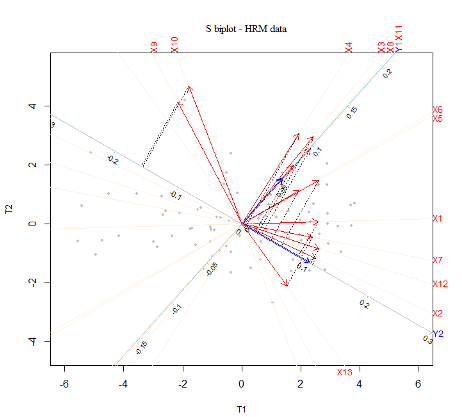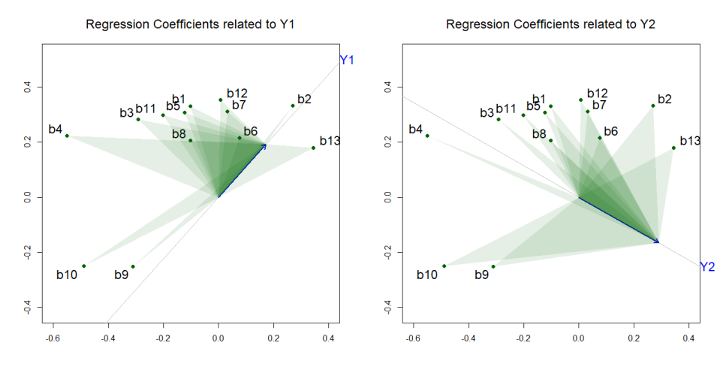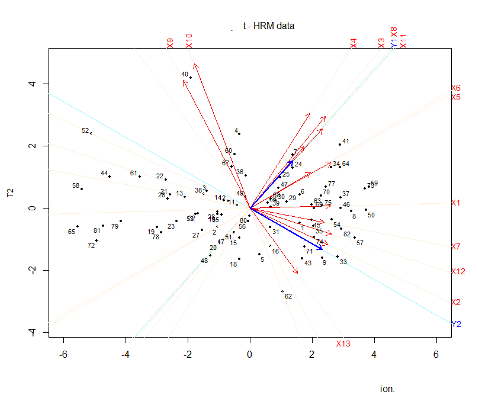costs (Rousseau & Aubé, 2010). The quality of the group experience (
) is related to the quality of the
social climate within the team (Aubé & Rousseau, 2005).
Team effectiveness will be considered, in the present study, as the result of the role played by thirteen
variables: team trust (2 dimensions), team psychological capital (4 dimensions), collective behavior,
transformational leadership, intragroup conflict (2 dimensions), team psychological safety, and team
cohesion (2 dimensions). Each variable will be briefly described as follows.
Team trust refers to the aggregate levels of trust that team members have in their fellow teammates
(Langfred, 2004) and has been conceptualized as a bidimensional construct: the affective dimension of team
trust (
) is related to the perception of the presence of shared ideas, feelings, and concerns within the team;
the task dimension of team trust (
) has been associated with the recognition by team members of the
levels of professionalism and competence of their teammates and on their ability to appropriately perform
the tasks (McAllister, 1995).
Team psychological capital (PsyCap) can be defined as a team positive psychological state characterized
by: having confidence (efficacy) to succeed in challenging tasks; making a positive attribution (optimism)
about succeeding now and in the future; persevering, and when necessary, redirecting paths to goals (hope)
in order to be effective; and having the ability to bounce back from challenges and setbacks (resilience)
(Luthans, Avolio, Avey, & Norman., 2007; Luthans & Youssef-Morgan, 2017; Walumbwa Luthans, Avey,
& Oke, 2011). In summary, team PsyCap includes four team psychological resources: team efficacy (
),
team optimism (
), team hope (
), and team resilience (
).
Collective behavior (
) refers to the members’ tendency to coordinate, evaluate, and utilize task inputs
from other team members when performing a group task (Driskell, Salas, & Hughes, 2010).
Transformational leadership (
) can be defined as a leadership style that encourages followers to do
more than they originally expected, broadening and changing their interests and leading to
conscientiousness and acceptance of the team’s purposes (Bass, 1990). Carless, Wearing and Mann (2000)
described transformational leaders as those who exhibit the following seven behaviors: they 1)
communicate a vision; 2) develop staff; 3) provide support for them to work towards their objectives
through coordinated team work; 4) empower staff; 5) are innovative by using non-conventional strategies
to achieve their goals; 6) lead by example; 7) are charismatic.
Intragroup conflict can be defined as a disagreement that is perceived as creating tension at least by one
of the parties involved in an interaction (De Dreu & Weingart, 2003). Conflicts in teams may emerge as a
result of the presence of different ideas about the tasks performed (
) – task conflict – or may be related
to differences between team members in terms of values or personalities (
) – affective conflict (Jehn,
1994).
Team psychological safety (
) relates to team members’ perceptions about what the consequences will
be of taking interpersonal risks at the work environment. It means taking beliefs for granted about how
others will react when one speaks up or participates. It is a confidence climate that comes from mutual
respect and trust between members (Edmondson, 1999).
Team cohesion can be defined as the team members’ inclination to create social bonds, resulting in the
group sticking together, remaining united, and wanting to work together (Carron 1982; Salas, Grossman,
Hughes, & Coultas, 2015). It can be related to the task or the affective system of the team. Task cohesion
(
) refers to the shared commitment among members towards achieving a goal that requires the collective
efforts of the group. Social cohesion (
) refers to shared liking or attraction to the group and to the nature
and quality of the emotional bonds of friendship, liking, caring, and closeness among group members
(Chang & Bordia, 2001).
3.2 Sample and Data Collection Procedure
Organizations were selected by convenience, using the personal and professional contacts network of the
research team. To collect data, key stakeholders in each organization (CEOs or human resources managers)
were contacted to explain the purpose and requirements of the study. When the organization agreed to
participate, the selection of teams for the survey was based on the following criteria (Cohen & Bailey,
1997): teams must be composed of at least three members; should be perceived by themselves and others
as a team; they have to regularly interact, interdependently, to accomplish a common goal; and they must
have a formal supervisor who is responsible for the actions of the team.
Data was collected following two strategies. In most organizations, questionnaires were filled in during
team meetings, in the presence of a member of the research team. When it was not possible to implement
this strategy, they were filled in online via an electronic platform. Data was obtained from 104 teams and
their respective leaders. After eliminating from the sample teams with a team members’ response rate below
50% and participants with more than 10% of missing values, the remaining sample had a total of 82 teams.
In this remaining sample, missing values in the questionnaires were replaced by the item average (in case















